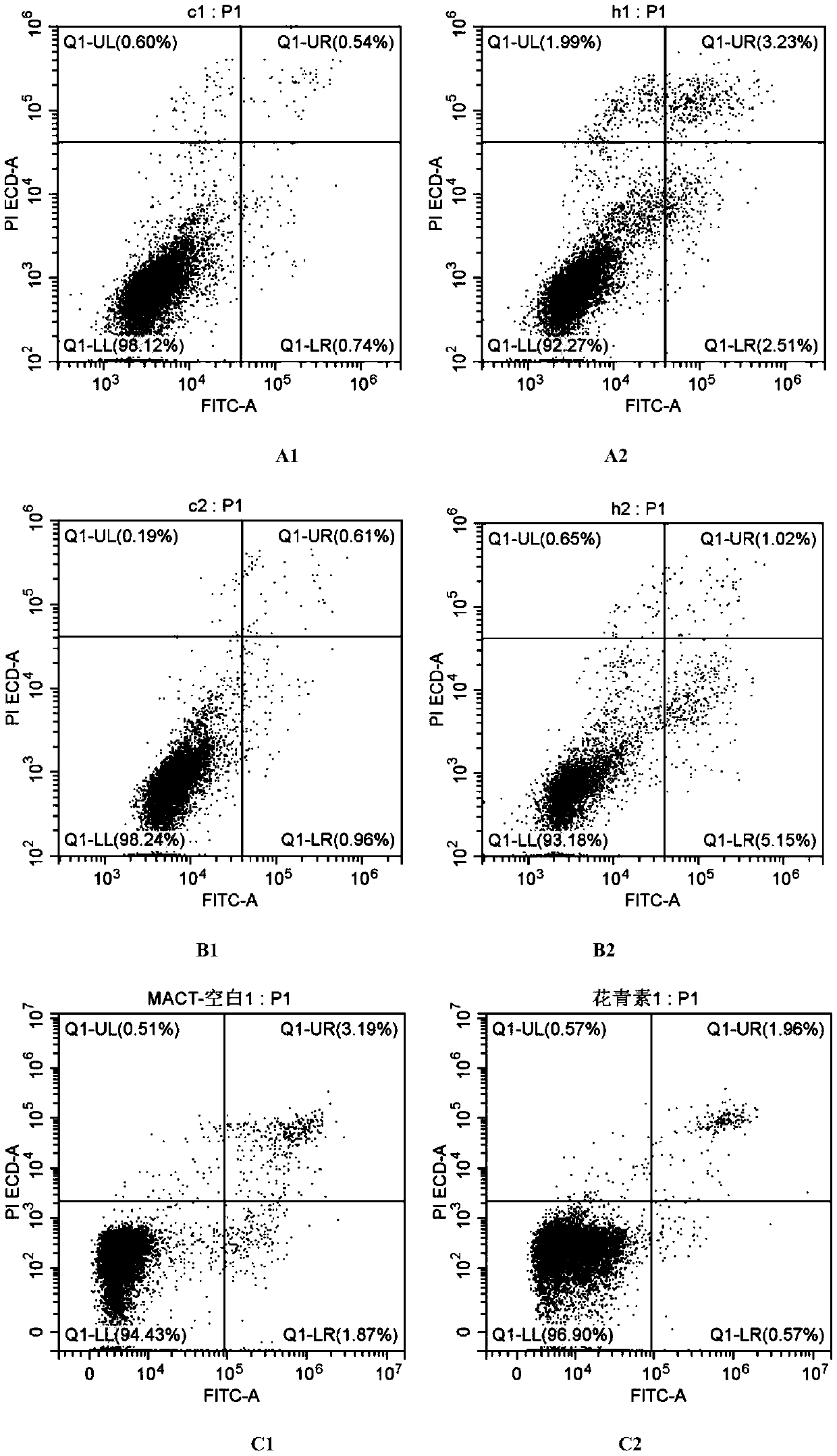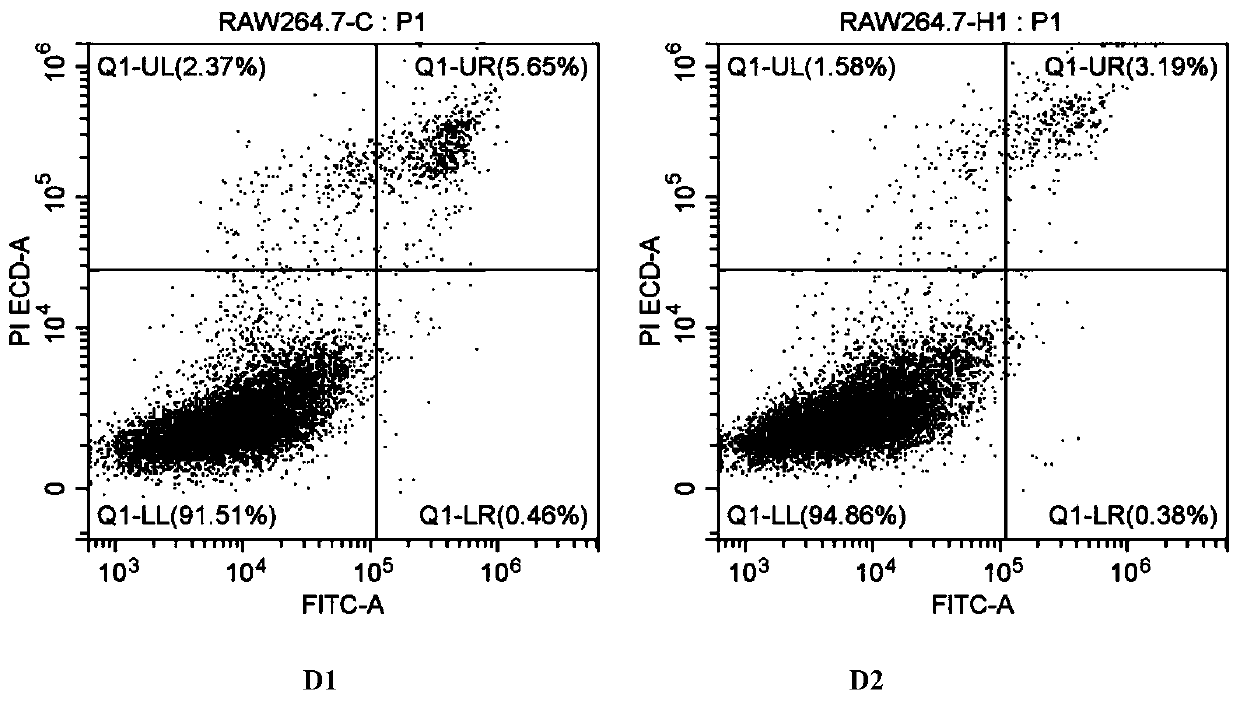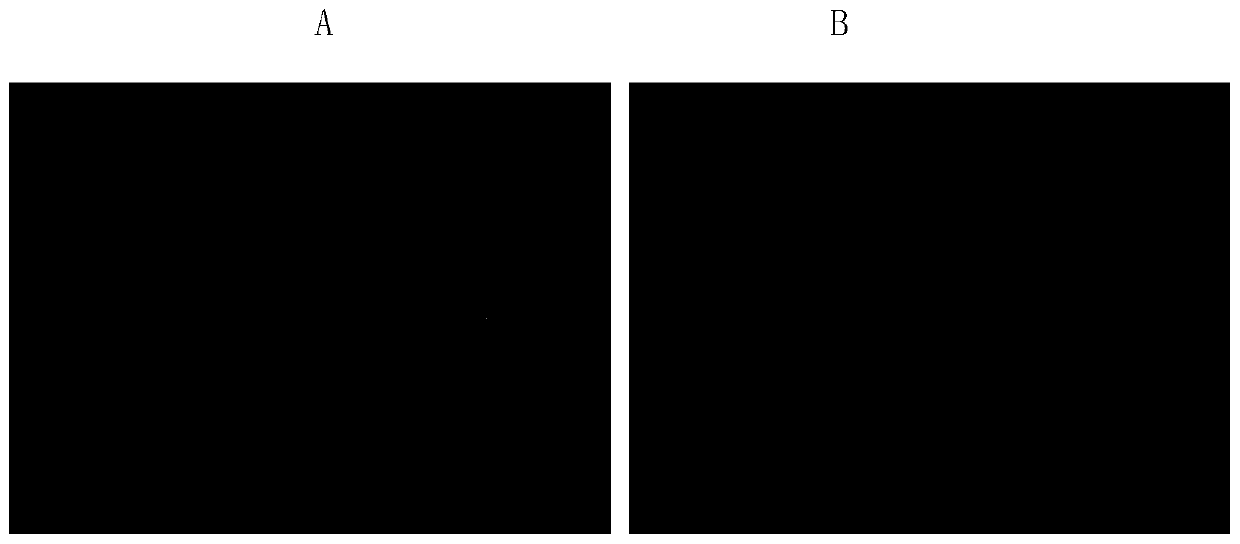Application of lycium ruthenicum anthocyanin to preparing medicine for inducing apoptosis of two types of cancer cells
A technology of anthocyanins and cancer cells, applied in the field of molecular biology, to achieve high safety and feasibility, high accuracy and reliability, and the effect of reducing cell proliferation
- Summary
- Abstract
- Description
- Claims
- Application Information
AI Technical Summary
Problems solved by technology
Method used
Image
Examples
Embodiment 1
[0031] Embodiment 1: In this embodiment, the anthocyanin concentration and processing time of Lycium barbarum are explored.
[0032] (1) Cell culture: MCF-7 uses DMEM / F12 medium, the proportion of complete medium is 90% medium and 10% fetal bovine serum, cultured at 37°C, CO 2 The concentration is 5%.
[0033] (2) Cell treatment: MCF-7 cells were divided into 5 groups, the first group was the control group, and the 2-5 groups were the treatment groups. Cells were cultured in a six-hole plate. When the cells were cultured to 50%, the treatment groups 2 and 3 were replaced with anthocyanin medium with an anthocyanin concentration of 20ug / mL, and the culture was continued for 20h and 30h respectively; 5. Change to the anthocyanin medium with the anthocyanin concentration of Lycium barbarum 2mg / mL, and continue to culture for 20h and 30h respectively. HepG2 cells were divided into three groups, the first group was the control group, and the second and third groups were the treat...
Embodiment 2
[0035] Example 2: In this example, four kinds of cells were detected by flow cytometry.
[0036] (1) Cell culture: MCF-7 and Mac-T use DMEM / F12 medium, HepG2 uses MEM medium, RAW264.7 uses DMEM medium, and the proportion of complete medium is 90% medium and 10% fetal bovine serum , cultured at 37°C, CO 2 The concentration is 5%. , when the cells were cultured to 50%, the experimental group was replaced with an anthocyanin medium with an anthocyanin concentration of 20ug / mL and continued to cultivate for 30 hours.
[0037] (2) Sample preparation: After 30 hours, the culture medium was discarded, washed twice with PBS buffer, digested with trypsin and centrifuged at low speed to collect the cells. Adjust the cell concentration 1x10 with buffer 6 / 100uL / test; add 5uL Annexin V and 5uL PI, keep away from light for 20min at room temperature; add 500uL buffer to test on the machine.
[0038] (3) Image analysis: Annexin V-FITC and PI are the most commonly used reagents for apoptosi...
Embodiment 3
[0039] Example 3: In this example, the cells were treated with the EDU kit, and the cell proliferation was observed with an immunofluorescence microscope.
[0040] (1) Cell culture: same as Example 2(1).
[0041] (2) Sample preparation: 1) Dilute the EdU solution (reagent A) with the cell culture medium at a ratio of 1000:1 to prepare an appropriate amount of 50 μM EdU medium; add 100 μL of 50 μM EdU medium to each well and incubate for 2 hours, discard the medium; PBS Wash the cells 1-2 times, 5 minutes each time. 2) Add 50 μL cell fixative solution (i.e. PBS containing 4% paraformaldehyde) to each well and incubate at room temperature for 30 minutes, discard the fixative solution; add 50 μL 2 mg / mL glycine to each well, incubate on a decolorizing shaker for 5 minutes, discard the glycine solution; Add 100 μL PBS to each well, wash on a decolorizing shaker for 5 minutes, discard PBS; add 100 μL osmotic agent (0.5% TritonX-100 in PBS) to each well and incubate on a decolorizi...
PUM
 Login to View More
Login to View More Abstract
Description
Claims
Application Information
 Login to View More
Login to View More - R&D
- Intellectual Property
- Life Sciences
- Materials
- Tech Scout
- Unparalleled Data Quality
- Higher Quality Content
- 60% Fewer Hallucinations
Browse by: Latest US Patents, China's latest patents, Technical Efficacy Thesaurus, Application Domain, Technology Topic, Popular Technical Reports.
© 2025 PatSnap. All rights reserved.Legal|Privacy policy|Modern Slavery Act Transparency Statement|Sitemap|About US| Contact US: help@patsnap.com



